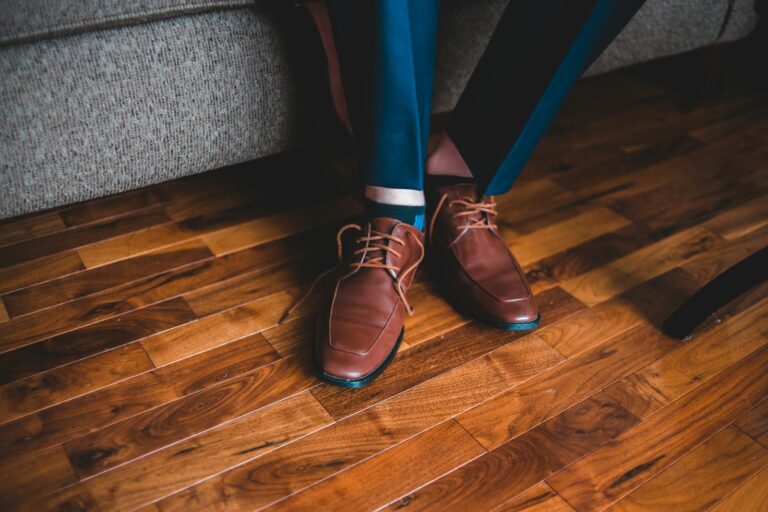Wooden floor is a timeless and elegant choice for any house, adding heat, durability and aesthetic appeal.
However, its beauty and longevity can be significantly affected by the moisture force often infeed.
Understanding the impact of moisture on the wooden floor is crucial to maintaining its integrity and ensuring a lasting investment.
The Science Behind Humidity’s Impact
Humidity refers to the amount of moisture present in the air. When humidity levels fluctuate, hardwood flooring, being a natural material, responds by expanding and contracting. This process is known as dimensional change.
As the air becomes more humid, wood fibers absorb moisture, causing the flooring to expand. Conversely, in dry environments, wood releases moisture, leading to contraction.
These fluctuations can have significant consequences for your hardwood floors, impacting their appearance, performance, and even structural integrity.
Expansion and Contraction
The expansion and contraction of hardwood flooring due to humidity changes can lead to a range of problems. When moisture is absorbed, the wood expands, pushing against walls and other fixed objects.
This can cause cupping, where the floorboards bulge upward in the center, or buckling, where the floorboards rise and create an uneven surface.
Conversely, excessive dryness can cause the wood to shrink, leading to gaps between boards, creating unsightly cracks and making the floor feel loose and unstable.
Impact on Flooring Stability and Appearance
The dimensional changes caused by humidity can significantly impact the overall stability and appearance of your hardwood floors. Uneven expansion and contraction can lead to warping, where the floorboards become uneven and lose their flatness.
This can create tripping hazards, make it difficult to move furniture, and compromise the integrity of the flooring. Additionally, fluctuating humidity can also affect the finish of your hardwood floors, leading to fading, cracking, and a dull appearance.
Preventing Damage: Managing Humidity Levels
Protecting your hardwood flooring from the detrimental effects of humidity requires a proactive approach. Managing humidity levels in your home is crucial to minimize the risks of expansion, contraction, and subsequent damage.
Here are some effective strategies to maintain a stable humidity environment:
1. Utilizing a Dehumidifier in High-Humidity Environments
In humid climates or during seasons with high moisture levels, using a dehumidifier can help regulate the humidity in your home. Dehumidifiers effectively remove excess moisture from the air, preventing the wood from absorbing too much water and expanding. By maintaining a consistent humidity level, you can prevent warping, cupping, and other moisture-related problems.
2. Employing a Humidifier in Dry Environments
During dry seasons or in arid climates, using a humidifier can add moisture back into the air, preventing the wood from drying out excessively. Humidifiers work by releasing water vapor into the air, increasing the humidity level and minimizing the risk of shrinking, gaps, and cracks in your hardwood flooring.
3. Maintaining Proper Ventilation
Proper ventilation is essential for managing humidity levels in your home. Ensure adequate airflow by opening windows and doors for fresh air circulation, especially after showering, cooking, or using appliances that release moisture into the air. This allows excess humidity to escape, preventing it from accumulating and affecting your hardwood floors.
4. Minimizing Moisture Sources
Identify and minimize sources of moisture within your home. Ensure that plumbing leaks are promptly repaired, prevent water spills from accumulating on the floor, and avoid excessive use of steam cleaning or humidifiers. Reducing these sources of moisture can help maintain a more balanced humidity level and protect your hardwood flooring from damage.
Conclusion
The impact of humidity on hardwood flooring cannot be overlooked. Understanding how humidity affects your floors is crucial for safeguarding your investment and ensuring their long-term durability.
By managing humidity levels effectively and taking preventive measures, you can maintain the beauty, stability, and integrity of your hardwood floors, allowing you to enjoy their elegance for years to come.
Frequently Asked Questions
1. What types of hardwood flooring are most susceptible to humidity damage?
Answer: While all hardwood flooring is susceptible to humidity, certain species are more prone to expansion and contraction than others. Softwood species like Pine and Fir tend to be more susceptible than hardwoods like Oak and Maple. Additionally, unfinished or unsealed hardwood flooring is more vulnerable to moisture absorption.
2. How can I determine the ideal humidity level for my hardwood flooring?
Answer: The ideal relative humidity level for hardwood flooring is between 30% and 50%. Maintaining this range will minimize the risk of expansion and contraction while keeping the wood from drying out excessively.
3. Are there any specific areas in the house that are more prone to humidity problems?
Answer: Yes, areas like kitchens, bathrooms, and basements are typically more humid due to water usage and lack of ventilation. These areas require extra attention to humidity control to protect hardwood flooring.
4. Can I use area rugs to protect my hardwood flooring from humidity?
Answer: While area rugs can help regulate temperature and protect the floor from scratches, they do not prevent humidity from affecting the wood. Area rugs only cover a portion of the floor, allowing humidity to affect the exposed wood.
5. What steps should I take if I notice signs of humidity damage to my hardwood flooring?
Answer: If you notice signs of warping, cupping, or gaps in your hardwood flooring, it’s crucial to address the issue promptly. Contact a professional flooring specialist to assess the damage and recommend appropriate solutions. These solutions may include floor sanding and refinishing, moisture mitigation, or even floor replacement, depending on the severity of the damage.


